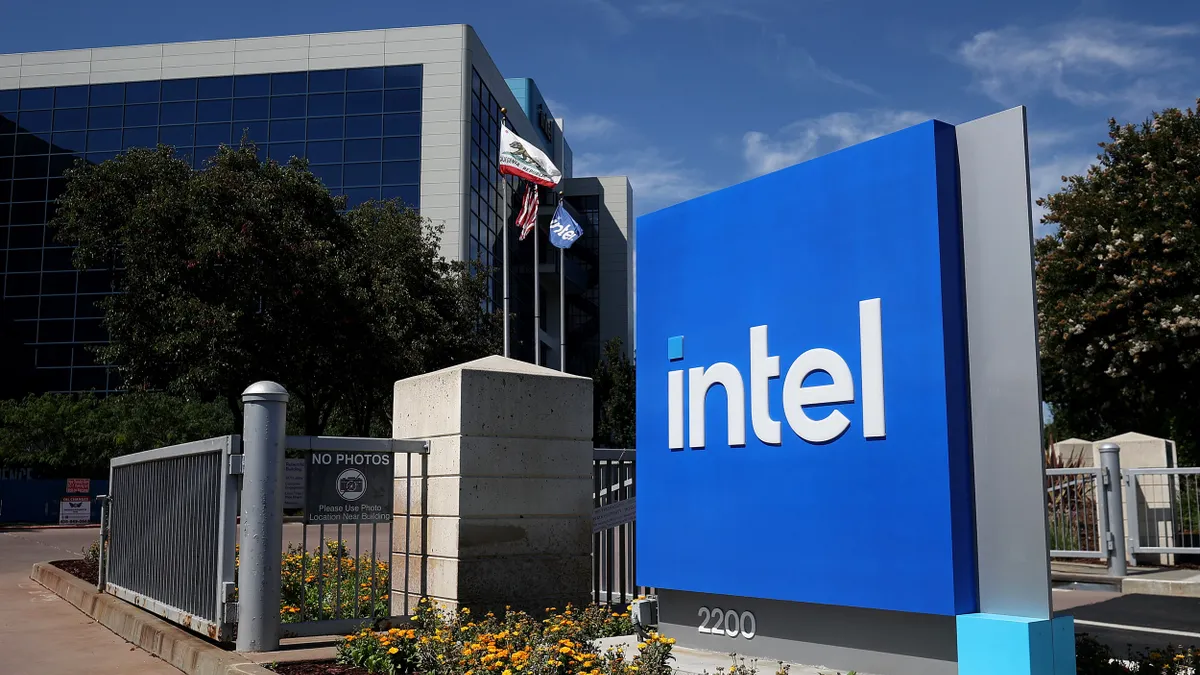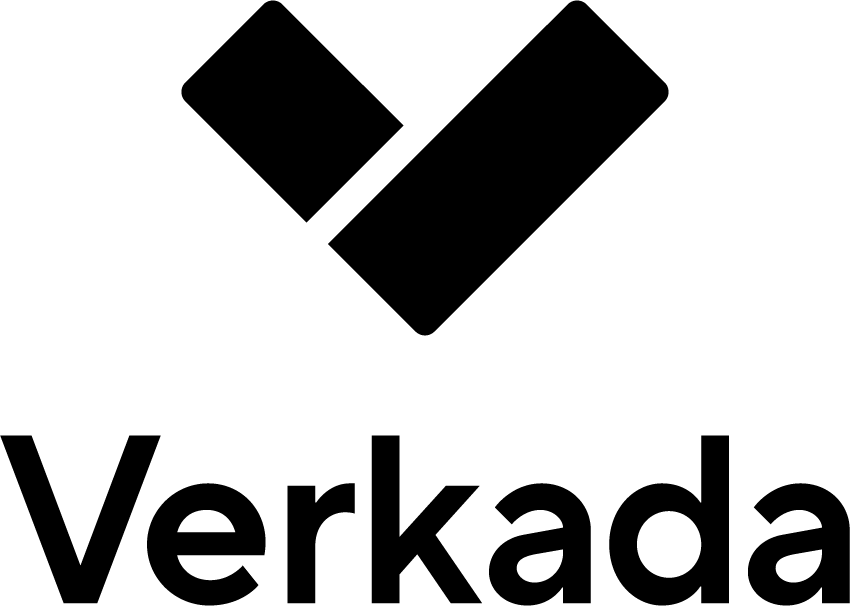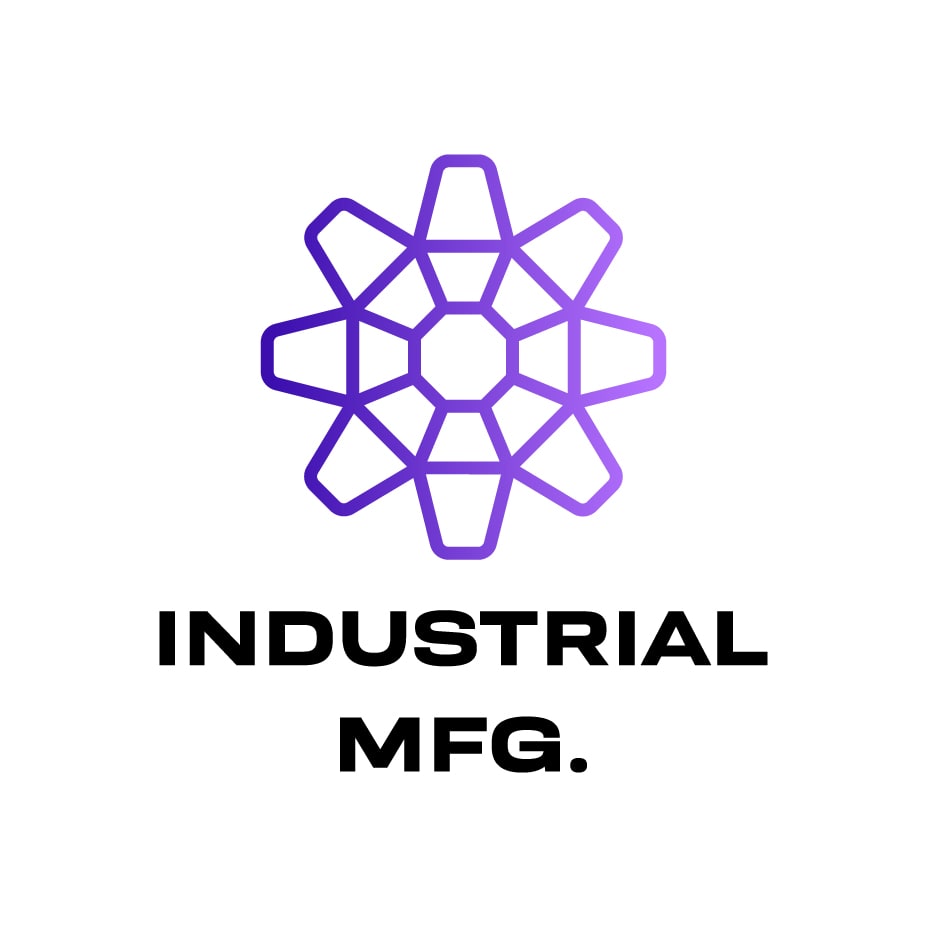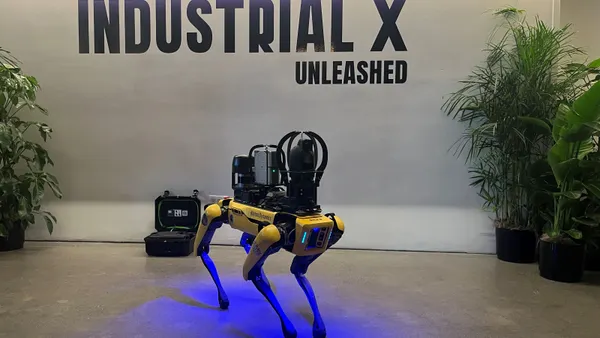Dive Brief:
- Intel’s turnaround efforts gained momentum in the third quarter, marked by billion-dollar investments from the U.S. government, Nvidia and Softbank Group, underlying strength from its semiconductor business, ongoing layoffs, restructuring and more.
- The Silicon Valley giant reported Q3 revenue of $13.7 billion, up nearly 3% from last year, driven by mid-single-digit growth in its largest business segment, the client computing group, which is focused on developing and selling PC processors and related parts. Net income surged 124% to $4.1 billion over the same period.
- During the quarter, Intel used its partner’s investments to help pay down $4.3 billion in debt, CFO David Zinsner said on a Q3 earnings call Thursday afternoon. The company received a total of $20 billion cash from the Trump administration, Softbank and other deals, he said, including proceeds from selling its Altera and Mobileye stakes.
Dive Insight:
“We are fully committed to advancing the Trump administration’s vision to restoring semiconductor production and proudly welcome the U.S. government as our essential partners in our efforts,” CEO Lip-Bu Tan said on an earnings call.
The company’s CCG generated $8.5 billion in the quarter, up 5% from last year as Intel strengthened its relationship with Microsoft through new collaborations and announced its Panther Lake processors for artificial intelligence PCs. Panther Lake is scheduled to begin high-volume production at Intel’s newest fabrication plant in Arizona later this year.
The data center and AI revenue segment totaled $4.1 billion in the quarter, down 1% year over year. Tan said it’s becoming more clear that computer processors play a critical role within the data center space, with some customers starting to ask about “longer-term strategic supply agreements” to support their business goals and the rapid expansion of AI infrastructure.
Meanwhile, Intel’s foundry business, which has previously weighed on the company, is continuing to gain momentum. The segment generated $4.2 billion in revenue, down 2% YoY. Tan noted that the foundry business is making steady progress on its Intel 18A node, which he said will be the foundation for Intel products over the next decade. Intel launched its fifth high-volume fab in Chandler, Arizona, during the quarter, specifically for making 18a wafers.
Tan added that Intel is continuing to engage with customers about its next-generation 14A node and is encouraged by early feedback.
“Our investment in foundry will be disciplined, and we will focus on capability and scalability, giving us flexibility to ramp quickly, and we will only add capacity when we have committed external demand,” Tan said.
One of the company’s top priorities this year has been to strengthen its balance sheet. During the quarter, Zinsner said Intel received $5.7 billion from the U.S. government and $2 billion from Softbank for the company’s pledge to advance semiconductor manufacturing.
The company also received $5.2 billion from selling its stakes in Altera and Mobileye. Zinsner said Intel expects Nvidia’s $5 billion investment to close by the end of Q4.
“We remain on track not only to rightsize the company by year-end, but also to evolve the talent mix, reestablish the engineering-first mindset and optimize the executive and management levels across the organization,” Tan said.
Intel’s core workforce, which excludes staff that work for Mobileye and other subsidiaries, is currently at 83,300 compared to 96,400 at the end of June, according to the company’s Q3 earnings report. This time last year, the company employed 115,000. Tan has previously said his goal is to reach 75,000 by year’s end.
Looking ahead, Intel is expecting Q4 revenue to range between $12.8 billion and $13.8 billion. It is also projecting a loss per share of 14 cents.
“We are still in the early stage of AI revolution, and I believe Intel can and will play a much more significant role as we transform the company,” Tan said.















